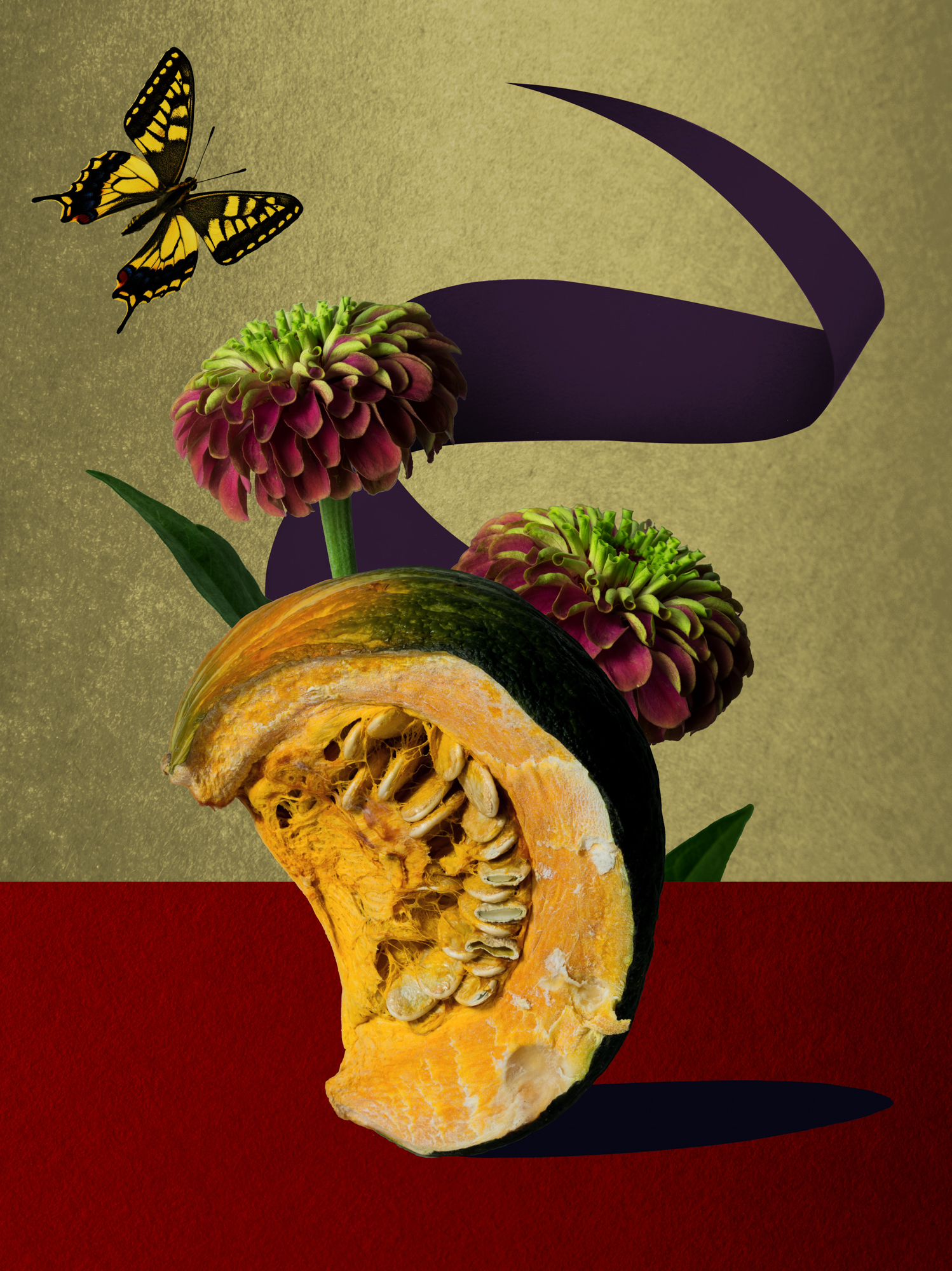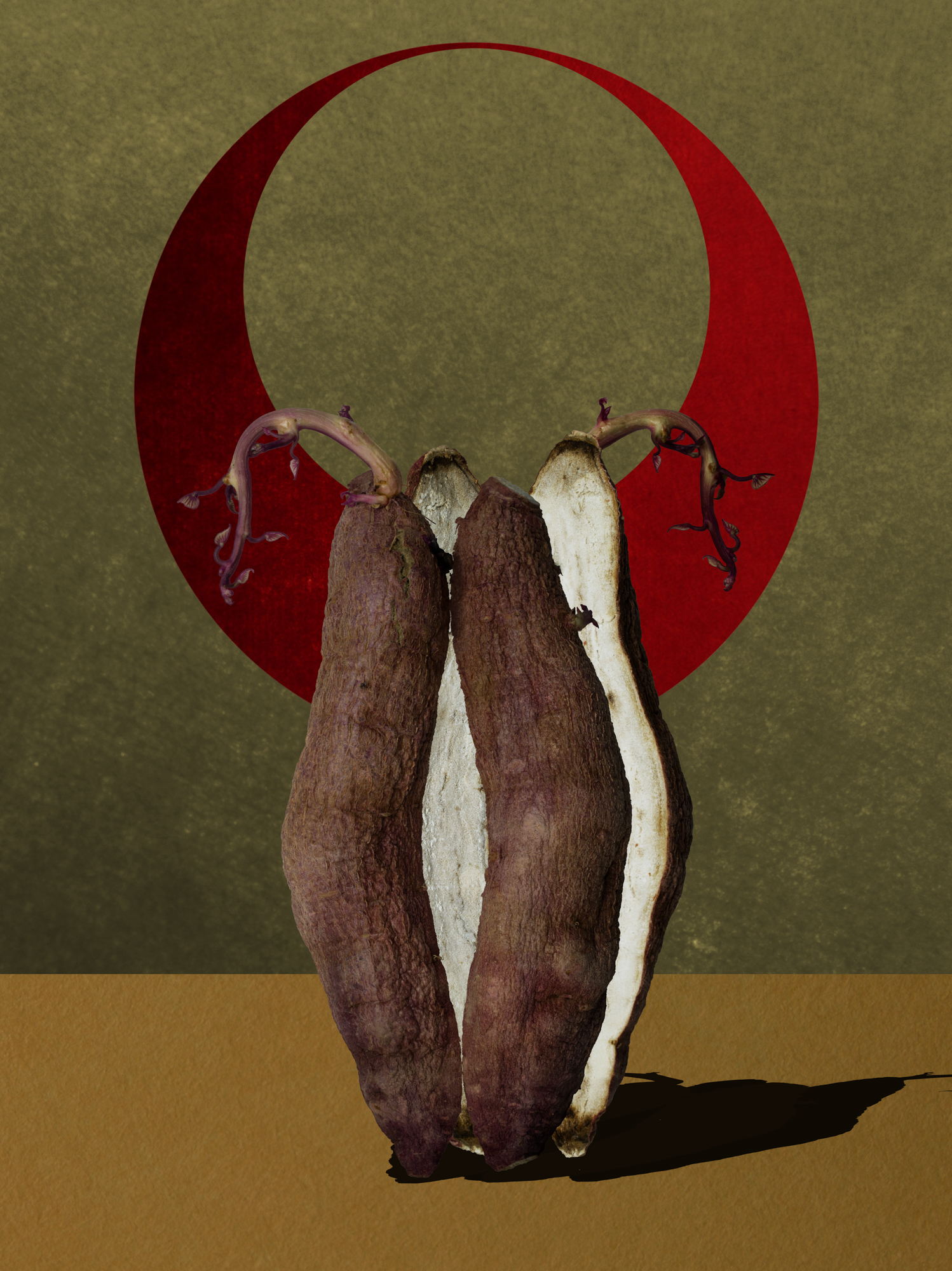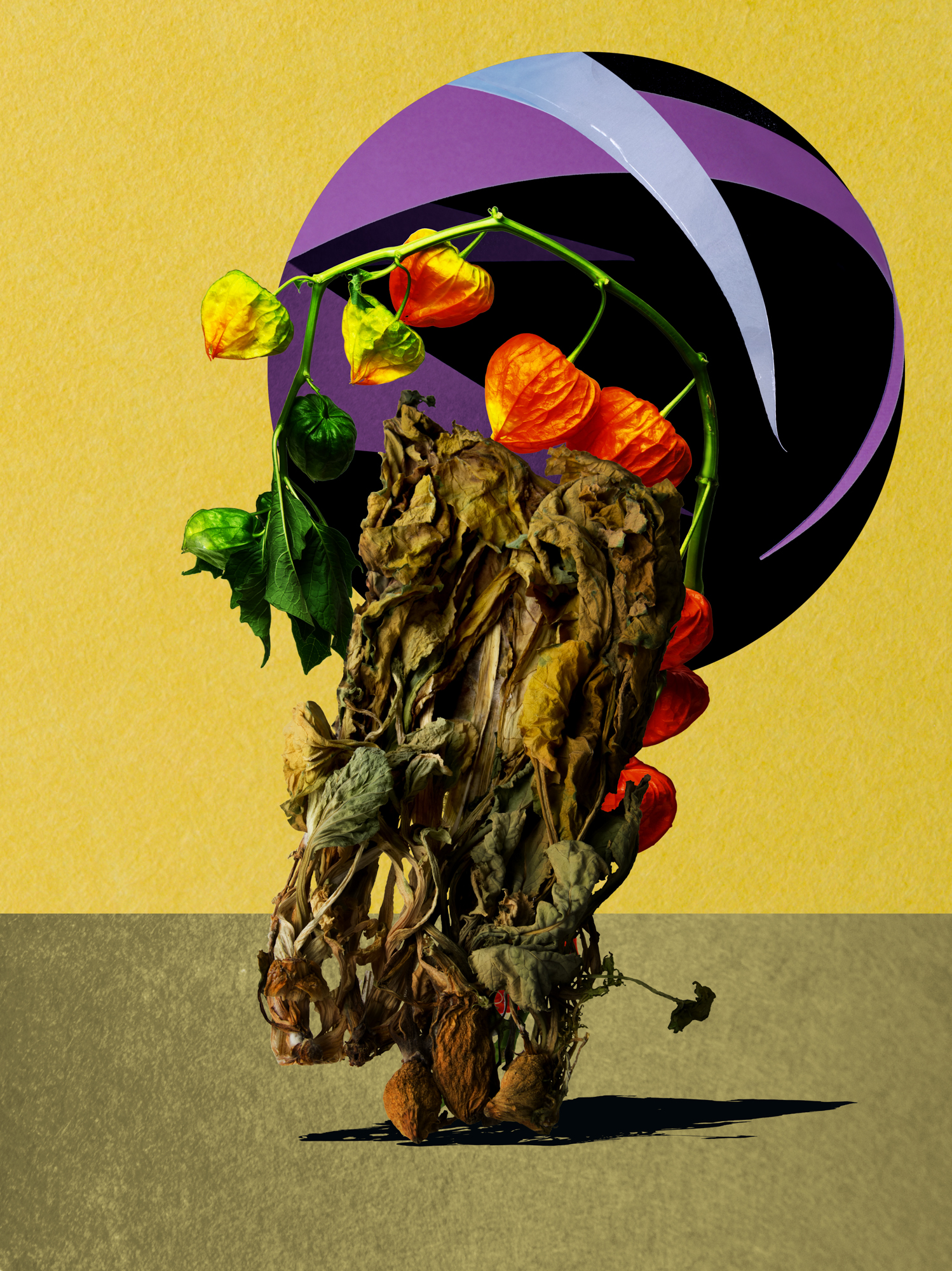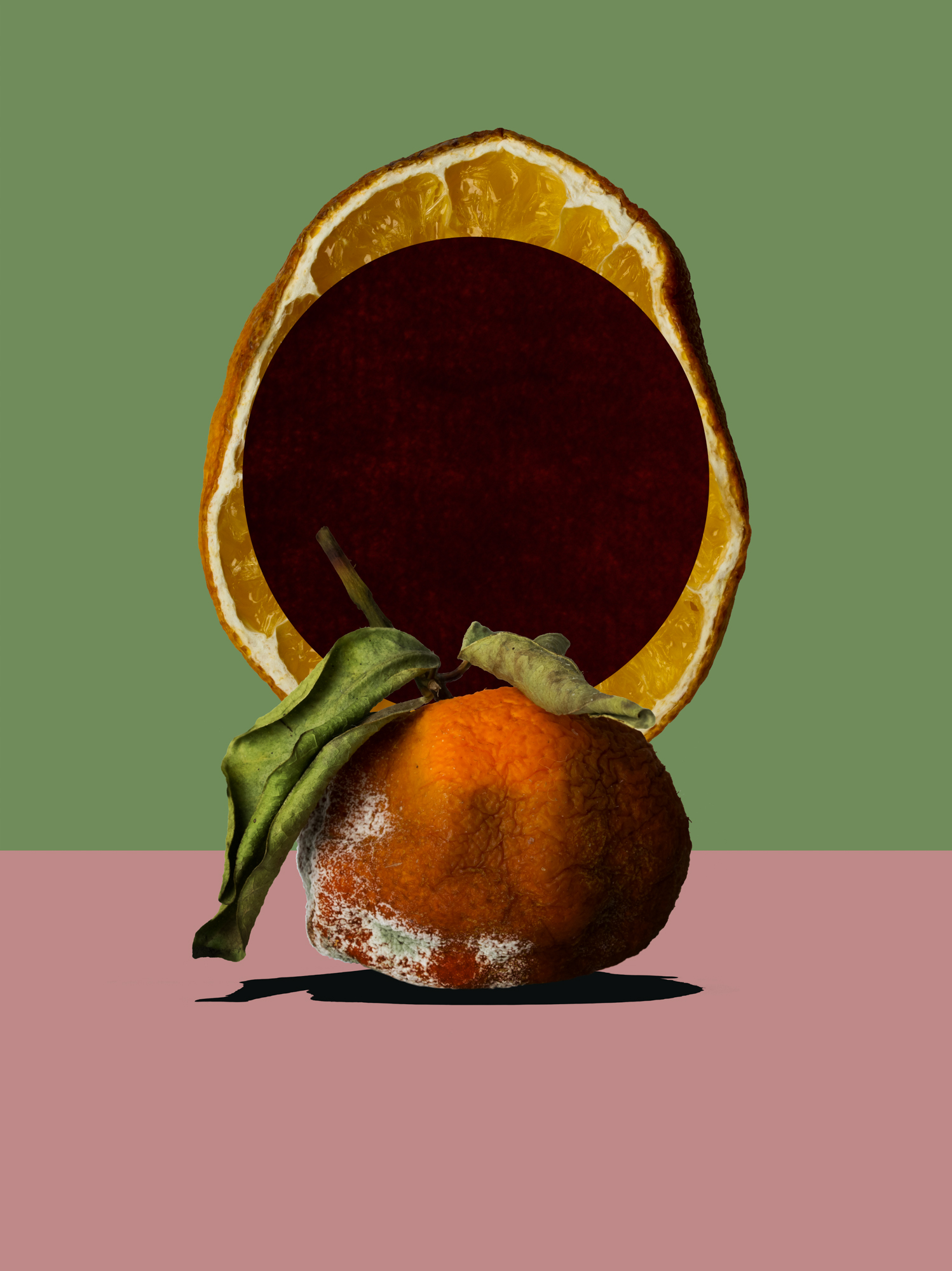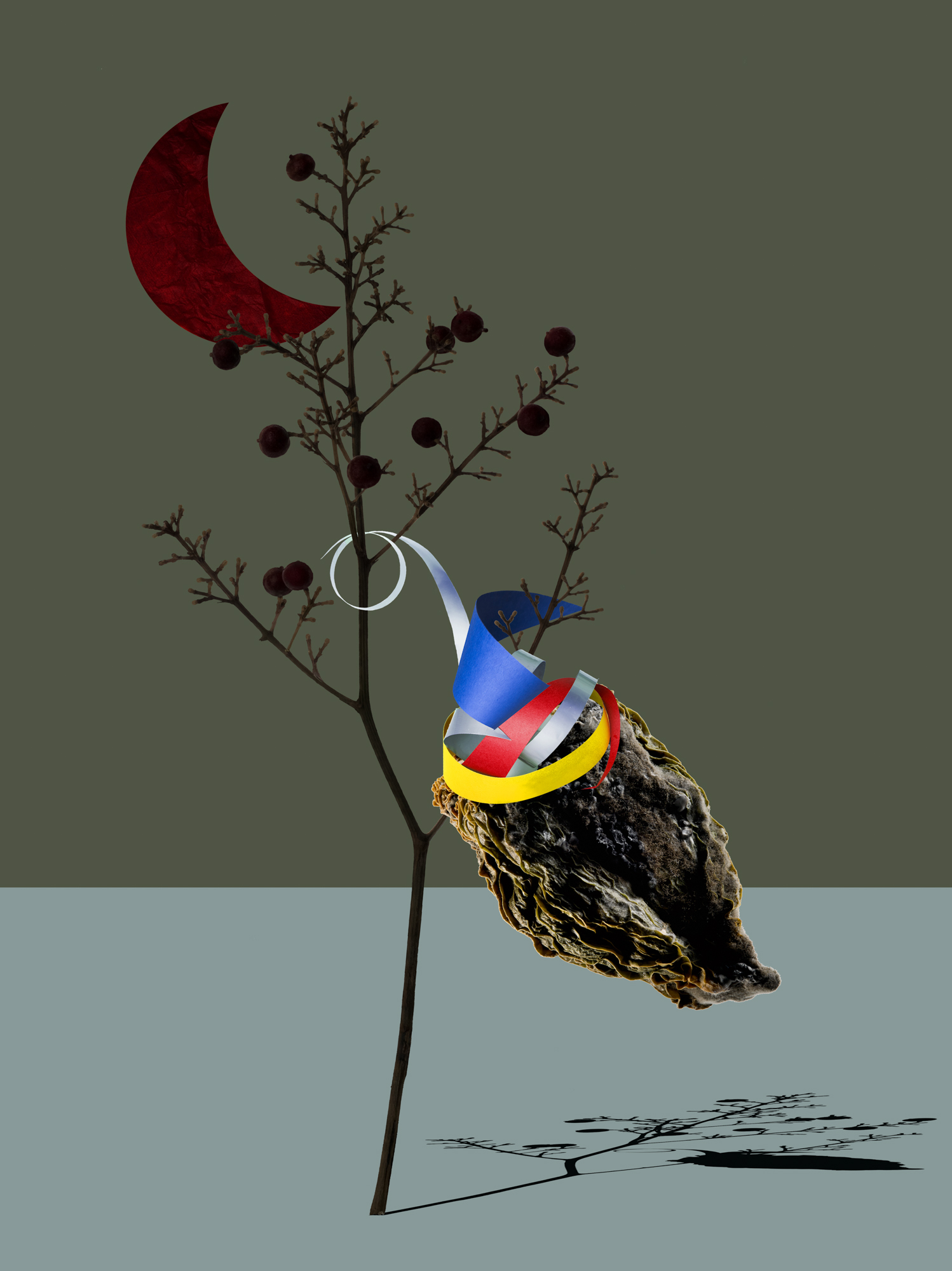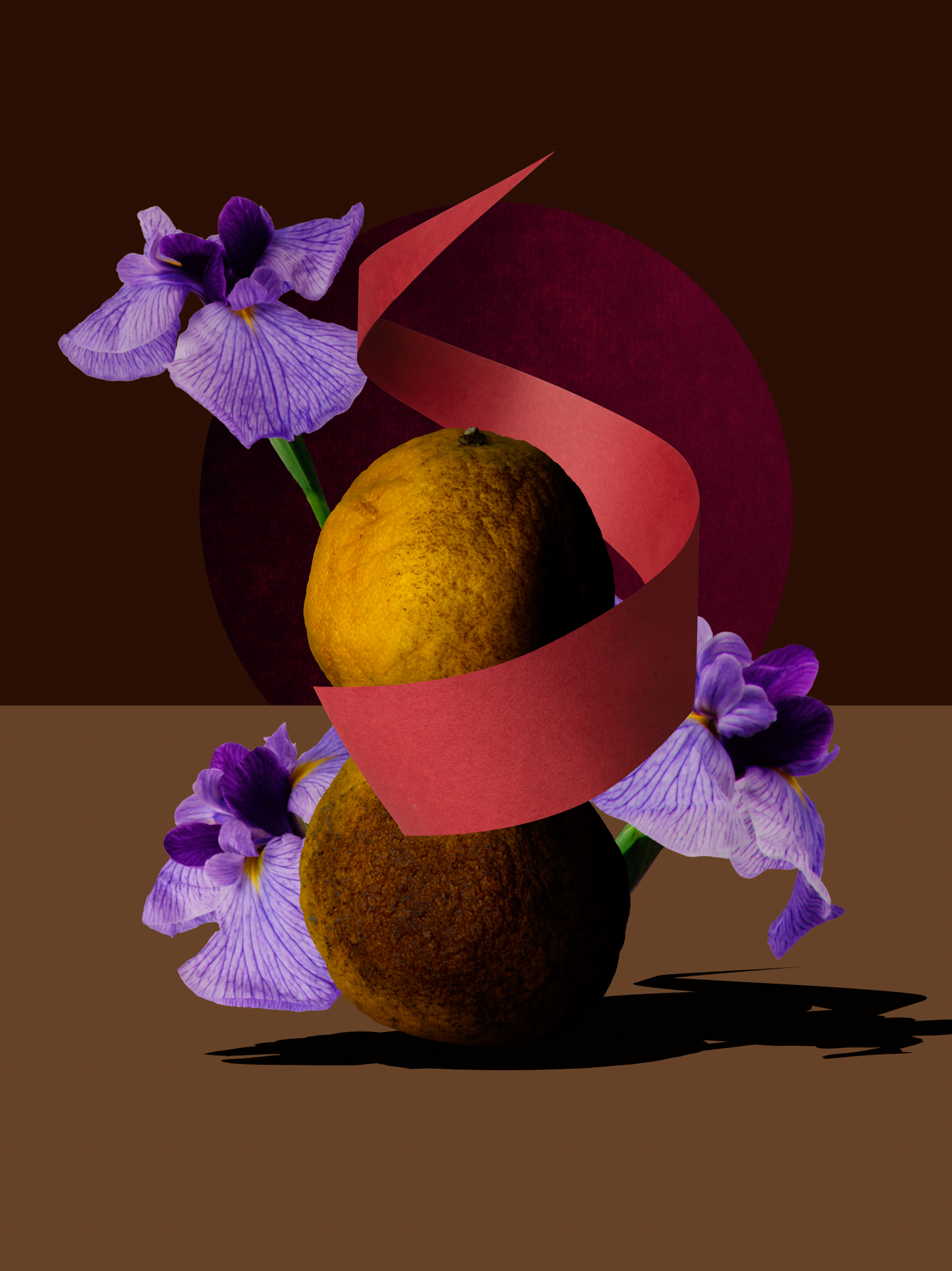Q&A: Shinya Masuda
By Hamidah Glasgow | January 25, 2018
Shinya Masuda was born in Nagoya, Japan in 1965.
He graduated from Nagano Art and Design School in Visual Communication Design.
Formerly a chef and trained by the renowned photographer HASHi, he now works as a professional photographer in Tokyo.
Shinya Masuda’s work makes visual the complexity of familial relationships. Carrying on family traditions while claiming a self-determined path has long been the subject of novels and films. Masuda uses the objects in his daily life that signify relationship and the conflicting way of love, enmity, and reconciliation.
Hanafuda Shouzoku Statement:
One day, I unintentionally spoiled a box of fruits and vegetables that my mother had sent from my hometown, without even taking them out of the box. I stared down at the veggies lying in the box, which now became their coffin. The sight pained me, but at the same time, it reminded me of my late grandmother’s pet phrase, “all things must pass.”
Once their time in this world has passed, all life lose forms. That’s only natural. While recognizing that providence, I also yearned to capture the remnants of love that my mother must have sent along with those items. The veggies’ value as foodstuffs may be lost, but a piece of my mother’s heart must linger still. Before even that vanished, I wanted to embalm those rotten foods for a proper send off.
I chose Hanafuda as a motif for the last rites.
Hanafuda, or flower cards, is a traditional Japanese card game consisting of a deck of 48 cards, which are divided into 12 suits of 4 cards each. Each suit represents a month of the year with a flower or a plant of that month. In most suits, two of the cards show a plain version of the flower or the plant, while one of them in most suits depicts a tanzaku, or a poetry ribbon, along with the flower. The top card features the flower along with an animal, a bird, or the moon.
The combination of the cards such as “a drink over cherry blossom” expresses some of the Japanese heritage of enjoying ephemeral beauty particular to that month or the season.
The grandmother who taught me the concept of impermanence also taught me how to play the game of Hanafuda.
The seasonal foodstuffs from my mother will depart, dressed in motifs from Hanafuda I played with my late grandmother. I remain in this world to capture the moment when my mother’s love transforms from “a matter of love” to “a record of love.”
HG: My sense of the Hanafuda series is that it is based on family ties, tradition, and finding your way in the world. While the graphic nature of the work belies the undertone narrative of difficulty, the juxtaposition of a clean graphic and the rotting nature of the content perfectly portray the complexity of the message of the work. Can you talk about this?
SM: From 2008, I started photographing spoiled foodstuffs that my mother had sent me. In the early days, I shot them as straight photography, but as my sentiment changed, so did the style of my work.
Initially, I craved to break away from my mother’s excessive shackle. In my mind, I knew that this persistent act was a manifestation of her overzealous love for me, but deep inside, I resisted that. As time passed, this resistance snowballed into strong hatred. Two opposite emotions began to coexist inside of me. I couldn’t understand what was happening. I was confused about myself.
But as time went by, the sight of foodstuffs that completed their mission and my aging mother began to overlap. I came to realize that what’s left of my mother’s time with me was limited. This gave rise to a sense of appreciation for my mother that outgrew my resistance. Hanafuda series expresses this sequence of evolving mindset.
The split screen background expresses the conflicting emotion toward my mother in the past. The two colors, in conflict, symbolize my ambivalent heart between appreciation and resistance (or hatred). The boundary between the two colors is clear, and the colors never blend - the background (me and my changing sentiment) and the foodstuffs that finished their duty (mother) coexist.
Shadow is a gimmick as well. Shadow of the foodstuff (or life that has served its purpose) that is rotting to its death expresses my wish to stop the time so that it will rot no further. I want time to stop so that my mother’s time will no longer tick to its end. I wish for her longevity. That is why all shadows are immutably artificial. But it’s only natural that all things must pass. I’ve learned this from my grandmother. My brain understands, but my heart remains ambivalent.
Regarding hanafuda:
Hanafuda is a card game with a long history in Japan. The cards are very small (5.3cm long by 3.2cm wide), known for their unique design. Seasonal flowers, birds, and animals are depicted, along with tanzaku poetry ribbons, moon, and other objects. Japanese love for nature throughout the four seasons is portrayed.
Regarding Hanafuda Shozoku series:
All the spoiled foodstuffs in Hanafuda Shozoku series were sent from my mother, who lives far away from me. Out of over-brimming love for her son, my mother always sent too much food. I was never able to finish them all, leaving some to rot. Every time that happened, I felt sorry for my mother and for the food items themselves.
I decided to photograph spoiled foodstuffs as a record of my mother’s love. I dressed them up for a proper ceremonious sendoff to express my appreciation and respect.
I chose hanafuda as a motif for the last rites, because of its connection with my grandmother. She was the one who taught me how to play this card game. She also taught me to cherish all things in this world, and the Buddhism concept of shogyo-mujo, which means, “All things must pass.”
This long-forgotten teaching from my grandmother came back, triggered by the sight of the rotten food from my mother, leading to the theme for Hanafuda Shozoku series.
HG: Some of the family dimension of your work is also based on your calling as an artist, is that right? That you haven’t taken a traditional route in pursuing a career is also part of the narrative of the work?
SM: As a boy, I spent a significant amount of time with my grandmother, who influenced me greatly.
As my grandmother drew Japanese-style painting and created batik arts, I drew or carved woodblocks for woodblock printing right beside her. The seed to become a creator was sown around that time.
After I graduated from high school, I became a French chef and opened my restaurant. I presented the dishes in a variety of ways so that the guests could visually enjoy the food. I followed not only the traditional recipe but strove to come up with new recipe ideas continually.
Then, I found photography.
Everyone close to me was surprised when I decided to leave my career as a chef and become a commercial photographer. But in my mind, my grandmother’s memories, my experience as a chef, and my current work as an artist are all connected; they do not exist as disparate, independent dots.
Past experiences that at a glance seem irrelevant often proves helpful at an unexpected moment in life. In this sense, Hanafuda series is an accumulation of what made me who I am now.
HG: Can you talk about your process of creating the composite images?
SM: My creative process always starts with a sketch. As I sketch, I think about the background color, items, and a narrative that matches those elements.
Next, I hang the objects with strings and wires, and at times, throw them up in the air, and photograph them.
Then, I overlay these photographed layers in Photoshop.
Regarding the background and hanafuda-related items, some are real objects made by Japanese papers, while others are digitally created on a computer.
However, I can say that every element is hand-made. Yes, the images may be composited, but the meticulous effort of putting together everything layer by layer is done by hand, which adds power to the work.
All shadows are fake, which spice up the visuals. As a former chef, I cherish spices. But one must be careful. Achieving perfect taste requires just the right amount of spice; too little or too much will not do.
Fusing a straight-photographed object with composite images produces a unique oddness that draws the audience into a whole new world.
Lastly, surprises make artworks more interesting. Unexpected accidents add enticing flavor that deepens the narrative of the work.
HG: What do you hope people take away from experiencing your work?
SM: Some people might wonder why rotten foodstuffs are coexisting with graphic background and elements, but that initial surprise works as a hook. After that, I want the audience to read the artist statement to savor the underlying warmth of the narrative. It’ll be great if people are pleasantly surprised by the drama expressed in my work.
HG: You have a wicked (great) sense of humor. Has that always been the case? Does this play a role in your work?
SM: Since I was small, I always loved to make people laugh. Above all, seeing smiles on others made me truly happy. Even today, imagining presenting new ideas to others excites me.
Things happen during actual production. But these unexpected accidents might be a sign of a fortuitous event to follow. A sense of humor is the spice that’s necessary when these things happen. To me, a sense of humor functions as an ultimate spice to express myself.
HG: Tell me about how your experiences with showing your work in the United States have differed from showing in your native Japan?
SM: The audience in the United States asks questions about the narrative of the work, along with simple feedbacks, such as “I like this” or “this is beautiful.” They cared less about techniques. In my native country, Japan, a majority of the questions is about the photography techniques involved. This is the most significant difference I felt.
Mindset toward photography in Japan is still very conservative. The word “photography” was translated as “a means to capture the truth (or reality)” (in kanji-character), and many still believe photography should be as such.
Through my work, I want to send out a message that “photography could be much freer.”
HG: What are you focusing on right now?
SM: Hanafuda Shozoku series will continue to evolve. The hanafuda cards depict flowers, birds, wind, and moon of the four seasons, but the current series do not contain birds and other animals yet. By including these motifs in the series, a new wind will rise. How might I harmonize these motifs with the rotten foodstuffs? I’m excited about the development as well.
HG: Thank you for sharing your work with us.
All images © Shinya Masuda


